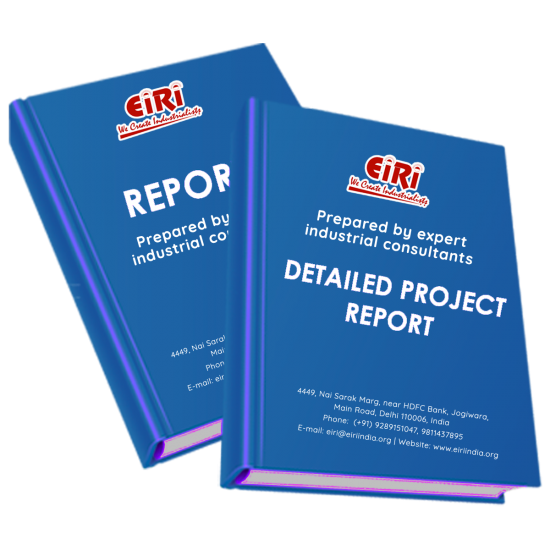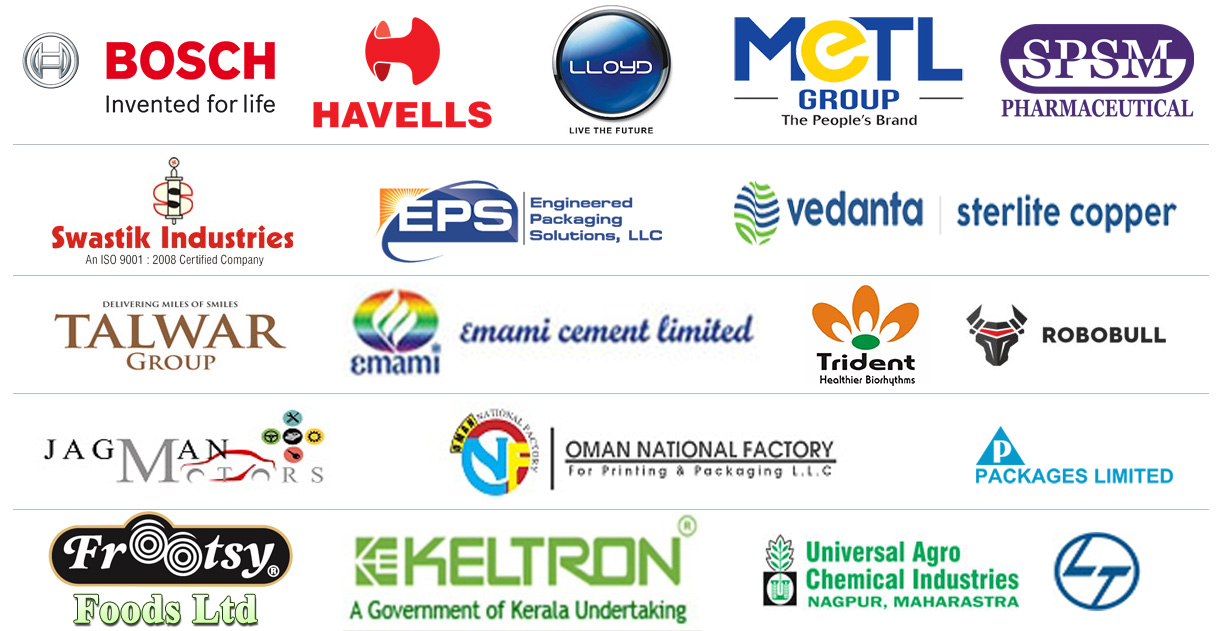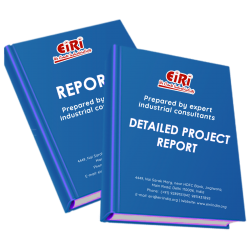Detailed Project Report on Fibre Cement Board

- More than 40 years of experience
- Managed by expert industrial consultants
- ISO 9001-2015 Certified
- Registered under MSME, UAM No: DL01E0012000
- 24/5 Research Support
Get your quesries resolved from an industry expert. Ask your queries before report or book purchase. - Custom Research Service
Speak to the our consultant to design an exclusive study to serve your research needs. - Quality Assurance
All reports are prepared by highly qualified consultants & verified by a panel of experts. - Information Security
Your personal & confidential information is safe & secure.
FIBRE CEMENT BOARD
[EIRI/EDPR/4240] J.C.: 2415XL
INTRODUCTION
Fibre cement board (FCB) has been used since the 1900s when Ludwig Hatschek first combined 90% cement and 10% asbestos fibres with water. The mixture was run through a cardboard machine to produce asbestos cement board. This board was widely used for residential construction until the 1970s discovery that asbestos cement board causes mesothelioma (a rare form of lung cancer), at which time many countries strictly prohibited its use. FCB is not only the oldest type of cement board, but also the most widely used and produced. It is manufactured by 43 companies worldwide, 48% of cement board producers.
Fibre cement board consists of cement, water, silica, limestone flour and fibres, be they recycled, synthetic or cellulose pulp. Optional additives, including silica fume, metakaolin (Al2Si2O5), fly ash, calcium silicate, flocculants (chemicals that promote coagulation) and defoamer may also be used.
The strength of FCB is dependent upon the composite fibres in several ways. Synthetic fibres such as Kevlar or carbon produce the strongest board, which is both moisture resistant and very expensive. Cellulose fibres can contain high levels of sugars and other organics that increase cement setting time and reduce the board's water resistance, although the use of kraft pulps, which release only very low amounts of sugar, can help to combat this. They can also contribute to an increased saturated mass, poor wet-to-dry dimensional stability and lower saturated strength, which can lead to freeze/thaw damage. The latter can, however, be controlled by appropriate board formulation. Recycled cellulose fibres are both environmentally friendly and economical, but are shorter than virgin fibres and as such produce weaker boards.
Fibre cement board is fire, moisture, impact and decay resistant and also lightweight, rendering it easy to handle and transport. It is also possible to print wood or brick effects directly onto it with a texture imitating plate, rendering it highly decorative. FCB is suitable for both internal and external applications, including weatherboard and façade, roofing, cladding, external and partition walls, underlay, flooring and tile-backing. Prefabricated housing projects using FCB can be seen in New Zealand,1 Spain2 and much of Africa,3 while in 2007 James Hardie constructed the Denny Park Appartments in Seattle, USA.4 The complexes are owned by the Low Income Housing Institute and are made from a combination of metal, Hardieplank and HardiePanel, which are sustainable FCB products with a 50 year guarantee.
There are three processing methods employed for the production of fibre cement board, namely the Hatschek process, the Extrusion process and the Perlite process.
COST ESTIMATION
Plant Capacity 360 MT/Day
Land & Building (4850 sq.mt.) Rs. 4.39 Cr
Plant & Machinery Rs. 6.85 Cr
Working Capital for 3 Months Rs. 35.64 Cr
Total Capital Investment Rs. 47.47 Cr
Rate of Return 72%
Break Even Point 23%
CONTENTS
INTRODUCTION
HATSCHEK PROCESS PRODUCTION OF FCB
EXTRUSION PROCESS PRODUCTION OF FCB
PERLITE PROCESS OF FCB
WOOD WOOL CEMENT BOARD (WWCB)
CEMENT BONDED PARTICLE BOARD (CBPB)
BISON PLANT PRODUCTION OF CBPB
ELTOMATION PLANT PRODUCTION OF CBPB
WOOD STRAND CEMENT BOARD (WSCB)
USE/APPLICATION/ADVANTAGES
APPLICATION
LONG LIFE SPAN
VERSATILITY IN STYLE
THE BEST WAY TO EMULATE WOOD
INSTALLATION OPTIONS FOR AESTHETICS
MATERIAL IS FIRE (AND HEAT) RESISTANT
LARGELY WEATHER RESISTANT
RESISTANT TO WARPING AND ROTTING
IDEAL FOR TORNADO AND HURRICANE PRONE AREAS
MINIMAL MAINTENANCE REQUIRED
EASY INSTALLATION
FIBRE CEMENT CUTS A VARIETY OF WAYS
GREAT WARRANTY
EXPANDS AND CONTRACTS LESS THAN WOOD
USE OF FIBRE CEMENT BOARDS IN INDUSTRIALIZED HOUSE MAKING PROCESS
STEPS ARE FOLLOWS:
CUTTING MACHINES FOR LONGITUDINAL AND CROSS SECTIONS
THIS MACHINE ALLOWS ANGULAR CUTTING OF THE FRONT WALL ELEMENTS ON WHICH THE ROOF RACK PROFILES ARE MOUNTED
THE CONCRETE FLOOR SLAB IS PRODUCED EXACTLY ACCORDING TO PLAN
THE METAL DOOR AND WINDOW FRAMES ARE INSTALLED
FIBRE CEMENT BOARD/PANEL SPECIFICATIONS
ASTM TESTING METHODS
MARKET OVERVIEW
INDIAN FIBRE CEMENT MARKET SEGMENT ANALYSIS - BY TYPE
INDIAN FIBRE CEMENT MARKET SEGMENT ANALYSIS - BY PRODUCTION PROCESS
INDIAN FIBRE CEMENT MARKET SEGMENT ANALYSIS - BY APPLICATION
INDIAN FIBRE CEMENT MARKET SEGMENT ANALYSIS – GEOGRAPHY
INDIAN FIBER CEMENT MARKET DRIVERS
INDIAN FIBER CEMENT MARKET CHALLENGES
MARKET LANDSCAPE
GLOBAL MARKET
RAW MATERIALS
SPECIFIC PROPERTIES OF CEMENT
RAW MATERIAL COMPOSITION
PROCESS DESCRIPTION/PROCESS FLOW SCHEMATIC
THE TYPICAL PROCESS FLOW SCHEMATIC IS SHOWN BELOW:
PLANT & MACHINERY USED FOR THE PROCESS
PLANT & EQUIPMENT SUPPLIER
BOILER
GENERATOR SET (DG SET)
MANUFACTURERS/SUPPLIERS OF PLANT & MACHINERY
PRESSING MACHINE
COOLING TOWERS
BOILER
GENERATOR SET (DG SET)
BALL MILLS
CEMENT SILO
HYDRO PULPER
AUTO CLAVE SYSTEM
WATER JET SYSTEM
TURN KEY CONSULTANT
MANUFACTURERS/SUPPLIERS OF RAW MATERIALS
CELLULOSE FIBRE
GENERATION AND MANAGEMENT OF WASTES
SOLID WASTES
LIQUID WASTES
GASEOUS EMISSION
OTHERS
INDUSTRIAL WASTE MANAGEMENT
SEWERAGE SYSTEM
ANTICIPATED ENVIRONMENTAL IMPACTS
CONSTRUCTION PHASE
OPERATION PHASE
MITIGATION MEASURES (PROPOSED)
HEALTH SAFETY & ENVIRONMENT
SAFETY & OCCUPATIONAL MEASURE (STORAGE/HANDLING OF RAW MATERIAL & PRODUCT)
PROPOSED IMPLEMENTATION SCHEDULE
PROJECT FINANCIALS
BASIS & PRESUMPTIONS (FOR PROFITABILITY WORKINGS)
APPENDIX – A:
01. PLANT ECONOMICS
02. LAND & BUILDING
03. PLANT AND MACHINERY
04. OTHER FIXED ASSESTS
05. FIXED CAPITAL
06. RAW MATERIAL
07. SALARY AND WAGES
08. UTILITIES AND OVERHEADS
09. TOTAL WORKING CAPITAL
10. TOTAL CAPITAL INVESTMENT
11. COST OF PRODUCTION
12. TURN OVER/ANNUM
13. BREAK EVEN POINT
14. RESOURCES FOR FINANCE
15. INSTALMENT PAYABLE IN 5 YEARS
16. DEPRECIATION CHART FOR 5 YEARS
17. PROFIT ANALYSIS FOR 5 YEARS
18. PROJECTED BALANCE SHEET FOR (5 YEARS)
How to Make Project Report?
Detailed Project Report (DPR) includes Present Market Position and Expected Future Demand, Technology, Manufacturing Process, Investment Opportunity, Plant Economics and Project Financials. comprehensive analysis from industry covering detailed reporting and evaluates the position of the industry by providing insights to the SWOT analysis of the industry.
Each report include Plant Capacity, requirement of Land & Building, Plant & Machinery, Flow Sheet Diagram, Raw Materials detail with suppliers list, Total Capital Investment along with detailed calculation on Rate of Return, Break-Even Analysis and Profitability Analysis. The report also provides a birds eye view of the global industry with details on projected market size and then progresses to evaluate the industry in detail.
We can prepare detailed project report on any industry as per your requirement.
We can also modify the project capacity and project cost as per your requirement. If you are planning to start a business, contact us today.
Detailed Project Report (DPR) gives you access to decisive data such as:
- Market growth drivers
- Factors limiting market growth
- Current market trends
- Market structure
- Key highlights
Overview of key market forces propelling and restraining market growth:
- Up-to-date analyses of market trends and technological improvements
- Pin-point analyses of market competition dynamics to offer you a competitive edge major competitors
- An array of graphics, BEP analysis of major industry segments
- Detailed analyses of industry trends
- A well-defined technological growth with an impact-analysis
- A clear understanding of the competitive landscape and key product segments
Need Customized Project Report?
- Ask for FREE project related details with our consultant/industry expert.
- Share your specific research requirements for customized project report.
- Request for due diligence and consumer centric studies.
- Still haven't found what you're looking for? Speak to our Custom Research Team
About Engineers India Research Institute:
Note: We can also prepare project report on any subject based on your requirement and country. If you need, we can modify the project capacity and project cost based on your requirement.
Our Clients

Our Approach
- Our research reports comprehensively cover Indian markets (can be modified as per your country), present investigation, standpoint and gauge for a time of five years*.
- The market conjectures are produced on the premise of optional research and are cross-accepted through associations with the business players
- We use dependable wellsprings of data and databases. What's more, data from such sources is handled by us and incorporated into the report
Why buy EIRI reports?
- Our project reports include detailed analysis that help to get industry Present Market Position and Expected Future Demand.
- Offer real analysis driving variables for the business and most recent business sector patterns in the business
- This report comprehends the present status of the business by clarifying a complete SWOT examination and investigation of the interest supply circumstance
- Report gives investigation and top to bottom money related correlation of real players/competitors
- The report gives gauges of key parameters which foresees the business execution






















